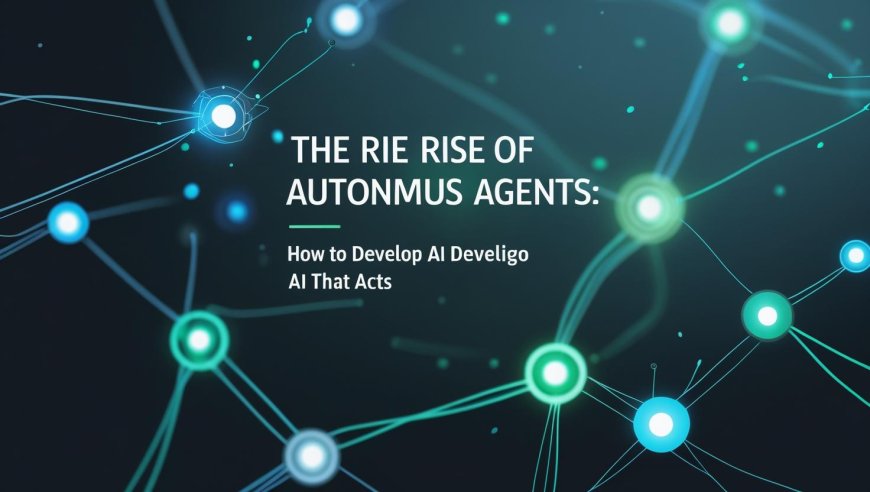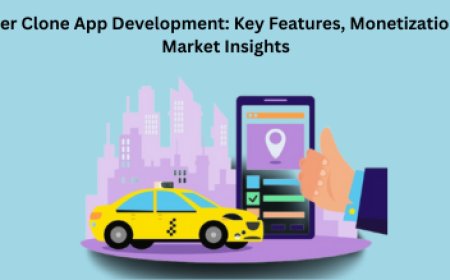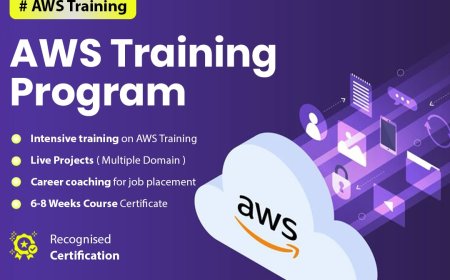The Rise of Autonomous Agents: How to Develop AI That Acts
Artificial Intelligence (AI) has rapidly progressed from passive data analysis tools to dynamic entities capable of decision-making, learning, and autonomous action.

Artificial Intelligence (AI) has rapidly progressed from passive data analysis tools to dynamic entities capable of decision-making, learning, and autonomous action. At the center of this evolution lies the concept of autonomous agentsAI-driven systems that perceive their environment, make decisions based on inputs, and act to achieve specific goals.
These agents are revolutionizing industries ranging from finance and healthcare to gaming and logistics, enabling a new level of automation and intelligence in systems that were once static and reactive. This blog explores the rise of autonomous agents, their core components, real-world applications, and practical steps to develop AI that truly acts.
What Are Autonomous Agents?
Autonomous agents are systems or software entities that can operate independently in dynamic environments to perform tasks or achieve objectives without continuous human intervention. These agents are designed to sense, reason, and act. They rely on inputs from their environment (via sensors or APIs), make decisions using algorithms (often AI or ML-based), and execute actions that affect their surroundings.
Unlike traditional programs, which follow a linear, rule-based logic, autonomous agents adapt and learn over time. They can adjust strategies, re-prioritize objectives, and even collaborate with other agents or humans. Examples include virtual assistants like Siri or Alexa, trading bots in financial markets, autonomous drones, and customer service chatbots that evolve with usage.
Why Autonomous Agents Are Gaining Popularity
The increasing complexity of digital ecosystems demands smarter systems that can operate efficiently without constant supervision. Traditional automation has limitationsit is rigid and incapable of adapting to new situations. Autonomous agents solve this by being context-aware, goal-oriented, and capable of learning from feedback. Businesses seek these agents to improve operational efficiency, reduce costs, and enhance customer experiences.
Moreover, advances in natural language processing, reinforcement learning, and multi-agent systems have accelerated their feasibility. From managing traffic flow in smart cities to optimizing warehouse operations in real time, autonomous agents are fast becoming essential to modern digital transformation strategies.
Core Components of an Autonomous Agent
To build effective autonomous agents, developers must integrate several core components:
1.Perception: The agent must understand its environment using data from sensors, APIs, or user input. In a robotic system, this might include GPS, cameras, or proximity sensors. In a software agent, perception often involves natural language input, behavioral data, or system logs.
2.Decision-Making Module: This is the brain of the agent. It processes input and chooses actions based on goals and current state. Decision models might include rule-based systems, decision trees, or more advanced machine learning techniques like deep reinforcement learning.
3.Action Module: The agent must be capable of acting upon its environmenteither through physical actuators (in robotics) or software APIs (in digital agents). This module executes the plan decided by the brain.
4.Learning Component: Many autonomous agents incorporate learning to improve over time. Reinforcement learning, supervised learning, or unsupervised methods help agents become more efficient, responsive, and adaptable.
5.Communication Interface: For multi-agent systems or human-agent collaboration, communication protocols (e.g., natural language understanding or custom APIs) are vital.
Steps to Develop AI That Acts
Developing an autonomous AI agent requires a mix of AI expertise, domain knowledge, and system integration skills. Heres a practical roadmap:
1. Define the Agents Purpose and Scope: Clearly define what the agent is supposed to do. Will it be recommending products, navigating a warehouse, or handling support queries? Establish boundaries, goals, and metrics for success.
2. Design the Environment Interface: The agent must perceive and interact with its environment. This means building or integrating input/output mechanisms such as APIs, data streams, sensors, or user interfaces.
3. Choose the Right AI Techniques: Based on complexity and goal structure, select the appropriate decision-making algorithms. For predictable environments, rule-based systems or supervised models might suffice. For dynamic, uncertain conditions, reinforcement learning or evolutionary strategies are preferred.
4. Implement the Agent Architecture: Develop the software architecture, ensuring modularity between componentsperception, decision-making, action, learning, and communication. Frameworks like ROS (Robot Operating System), OpenAI Gym, or Unity ML-Agents can be useful.
5. Train and Test: Use historical data, simulations, or real-world inputs to train the agent. Iteratively test and refine based on performance. Ensure safety protocols are in place, especially in physical or high-risk applications.
6. Monitor and Evolve: Once deployed, the agent must be continuously monitored. Use performance metrics and feedback loops to allow the system to learn and adapt. Regular updates may be required to account for changes in environment or goals.
Applications Across Industries
Autonomous agents are not limited to a single sectortheyre transforming workflows across multiple industries. In Healthcare, AI agents assist in patient monitoring, triaging support tickets, and even guiding surgical tools. These systems learn from patient data to offer proactive care. In Finance, autonomous trading agents react to market changes in milliseconds, optimizing portfolios and reducing human error. In Logistics, warehouse robots and delivery drones powered by autonomous agents are improving efficiency and reducing labor costs.
In Retail, customer-facing chatbots personalize shopping experiences, recommend products, and handle complaints. In Gaming and Simulation, non-player characters (NPCs) are now built using agent-based AI, making them more realistic and reactive. In Smart Homes, systems like smart thermostats or security agents adjust settings based on user behavior and environmental changes.
Challenges in Building Autonomous Agents
Despite their promise, developing autonomous agents comes with challenges.
1. Safety and Ethics: Autonomous systems must make decisions that are not only efficient but also ethical. In high-stakes areas like healthcare or transportation, mistakes can be catastrophic.
2. Interpretability: Understanding why an agent made a certain decision is crucial, especially in regulated industries. Many AI models (like deep neural networks) act as black boxes, posing challenges for auditability.
3. Data Dependence: Quality and quantity of training data impact agent performance. In some environments, data may be scarce, incomplete, or biased.
4. System Integration: Embedding agents into legacy systems or across diverse platforms often requires substantial engineering and orchestration.
5. Real-Time Constraints: Agents must make decisions fast, often with partial information. Balancing speed with accuracy is a constant engineering trade-off.
Future of Autonomous Agents
As AI models become more capable and compute resources more accessible, the horizon for autonomous agents expands. Advances in general-purpose models, edge AI, and neurosymbolic systems are pushing the boundaries of what agents can do.
Soon, well see more agents working collaboratively, forming intelligent ecosystems across devices, platforms, and even cities. Their ability to adapt, self-optimize, and operate autonomously will make them central to future enterprise solutions. Businesses looking to embrace this transformation can benefit from specializedAI Agent Development Services, which provide the expertise and frameworks to design, build, and deploy robust autonomous systems.
Conclusion
The rise of autonomous agents marks a pivotal shift in the AI landscapefrom passive tools to proactive collaborators. Whether managing smart homes, driving vehicles, or handling customer interactions, these agents represent the next frontier of digital intelligence. For developers, researchers, and businesses alike, understanding how to design and deploy AI that acts is no longer optionalits essential. The future belongs to systems that dont just process information, but make decisions and take action in the world.





























